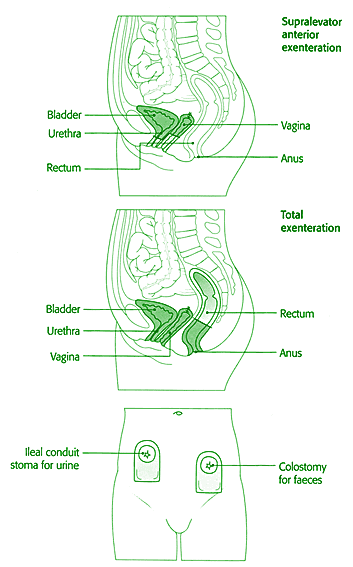|
Exenteration surgery
• A return or recurrence of cancer after treatment does not necessarily
mean that the cancer has become incurable, but further surgery called
exenteration surgery may be needed. The aim is to try and cure the cancer,
and this surgery is only considered if the cancer has not spread elsewhere
in the body. It involves removing some or all of the pelvic organs that
were left in place after your first operation.
• Total exenteration involves removal of the bladder and surrounding
tissues including the urethra, the lower parts of the bowel (anus and
rectum), vulva and vagina. Anterior exenteration surgery involves removal
of the bladder but not the anus and rectum, while posterior exenteration
involves removal of the anus and rectum but not the bladder. A procedure
called supralevator exenteration preserves the tissues below the floor
of the pelvis, in particular the vulva and the lower vagina.
• These operations are carried out under general anaesthetic, through
incisions made in the abdomen and between the legs. Supralevator exenteration
requires an abdominal incision only.
• Depending on the organs that are removed, you will need a urinary
diversion for urine and/or a colostomy for faeces. These involve making
one or more openings (stoma) in the abdominal wall so that the urine
and/or contents of the bowel can be collected in a bag or bags outside
the body.
|
|
 |




